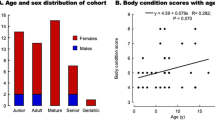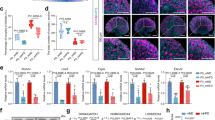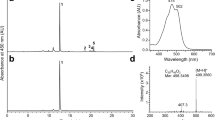Abstract
THOUGH there has been a strong indication since the work of Lohmann and Schuster1 that the active form of vitamin B1 in pigeon brain tissue is phosphorylated, the failure to obtain much activity with cocarboxylase in the catatorulin test with “brei” or slices has made it impossible to make a firm decision2,3. We are now able to report that with the use of two types of finely ground “avitaminous” brain preparations (in presence of fumarate) we can get either (1) a preparation which shows good catatorulin effects with small amounts of cocarboxylase (0.26 max.) and practically no effect with vitamin B1, or (2) one which still retains some catatorulin effect with large amounts of vitamin B1 (10 Î3) as well as good effects with small amounts of cocarboxylase. Both preparations are rather unstable; the medium vised is as in previous experiments.
This is a preview of subscription content, access via your institution
Access options
Subscribe to this journal
Receive 51 print issues and online access
$199.00 per year
only $3.90 per issue
Buy this article
- Purchase on SpringerLink
- Instant access to full article PDF
Prices may be subject to local taxes which are calculated during checkout
Similar content being viewed by others
References
Lohmann and Schuster, Biochem. Z., 294, 188 (1937).
Peters, Biochem. J., 31, 2240 (1937).
Ochoa and Peters, Biochem. J., 32, 1501 (1938).
Author information
Authors and Affiliations
Rights and permissions
About this article
Cite this article
BANGA, I., OCHOA, A. & PETERS, R. Active Form of Vitamin B1 in Tissues. Nature 143, 764 (1939). https://doi.org/10.1038/143764b0
Issue date:
DOI: https://doi.org/10.1038/143764b0
This article is cited by
-
Comparative genome analysis of mycobacteria focusing on tRNA and non-coding RNA
BMC Genomics (2022)
-
Pyruvate Oxidation System in Brain
Nature (1939)



